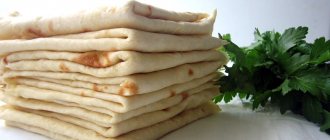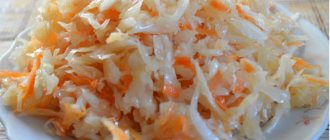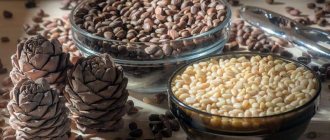A dish of pickled mushrooms is an integral part of the festive table for New Year, Christmas or Birthday. And the process of harvesting and preparing the harvest is a special sacrament.
Pickling is one of the good methods of preserving food for a long time, and our ancestors discovered it a long time ago. When storing at home, the main thing is to comply with the conditions and terms, so that later you can get maximum pleasure, benefit and not harm your body. It is better not to store pickled mushrooms purchased at the supermarket for a long time at home, because you did not prepare them, so you should be careful. After all, a mushroom preparation may contain a dangerous microorganism – botulinum toxin.
Storage life and conditions of pickled mushrooms
Storage conditions include temperature, lighting and means used to preserve them, in particular the material from which the lid covering the container with the forest harvest is made.
- The shelf life of pickled mushrooms will be shortened if the rules are neglected.
- It is important to prevent storage containers from being exposed to direct sunlight. They negatively affect its contents, and the process of decomposition can be triggered.
- Room temperature also plays an important role. The duration of storage of fruiting bodies is directly dependent on temperature conditions. The higher it is, the shorter the shelf life of the product.
- According to the general rules, without taking into account individual nuances, the storage period and conditions of prepared representatives of the forest kingdom give the following result:
| Storage mode | Temperature (degrees Celsius) | Storage time (in months) no more |
| Chill | no more than + 18 | 12 |
| Average | from +8 to + 18 | 18 |
| Cold | from 0 to + 8 | 24 |
So how long do pickled mushrooms last using different storage methods?
Without refrigerator
Novice housewives and young mushroom pickers are wondering: is it possible to store pickled mushrooms without a refrigerator? Yes, you can. However, if glass jars and different lids were used, the storage time will be different.
| Cover material | The storage time should not exceed |
| Nylon and polyethylene | 30 days |
| Metal and glass | 90 days |
In the refrigerator and freezer
At what temperature can pickled mushrooms be stored using home refrigeration equipment? The optimal range is considered to be from 0 to 4°C. Moreover, if the cover is made of material:
| polyethylene | 6 months |
| metal | year |
| glass | 24 months |
Under iron and nylon and after opening the lid
How long can pickled mushrooms be stored under an iron lid in glass containers after sealing?
- From 3 months to a year depending on conditions.
- If the material is made of nylon, then the shelf life is from 30 days to six months.
- The shelf life will be reduced by up to 24 hours if the can is opened.
- Therefore, it is recommended to roll up the forest harvest in small containers - for 1 - 2 times of use.
Storage methods
In a refrigerator
Opened champignons without special packaging can be kept in the refrigerator on the middle shelf for up to 3 days. In this case, the temperature must be maintained within the range from 0 to +2 °C. Longer storage in the open air leads to the fact that champignons lose most of their moisture, their surface darkens, and they become tasteless.
If you put pre-prepared, peeled mushrooms in plastic containers or a plastic bag, they will retain their properties for a week. At the same time, it is important to periodically provide oxygen access to the packaging, otherwise the accumulated condensate will cause spoilage and rotting of the product.
You can also do this: place the mushrooms in a compartment for storing vegetables in one layer. They will need to be covered with a cotton cloth or paper towel on top. This way they can stay fresh for up to 5 days.
In the freezer
If you freeze champignons, their shelf life will increase significantly. Before storing mushrooms for freezing, they are first cleaned (as described above). Then they are laid out in hermetically sealed containers or bags that are tied tightly. Store mushrooms in the general compartment at a temperature of -18°C for 1 month. Champignons cannot be re-frozen, so they are divided into portions, each of which will need to be consumed at a time.
Note: it will be easier and faster to select mushrooms for cooking if you sort them by size. Small champignons can be frozen whole, large ones can be cut into pieces.
In room
If you don’t have time to process all the raw materials at once, use this option. But remember that this is a short-term storage method - no more than 12 hours. They do this: carefully place the mushrooms in an enamel basin or plastic bucket. Place the filled container in a cold place, such as a cellar, basement or bathroom.
Interesting: How to Preserve Cabbage Fresh for the Winter in the Cellar
How long can you store homemade pickled mushrooms?
For most people, mushrooms are a special tasty dish , and sometimes even a delicacy. Therefore, it seems that those who have the opportunity to independently collect and replenish their provisions with mushrooms are the lucky ones.
The mushroom harvest makes you happy and you want to prolong the taste of nature’s gift as long as possible, and for this you need to know how long to store the preparations at home.
A mushroom is a special organism that does not form flowers or seeds and reproduces by spores. Various scientific sources call a mushroom an organism, a plant or a vegetable. But, by and large, two criteria are important to us: taste and benefit. Let's talk about the edible properties and how to store homemade pickled mushrooms.
Storing champignons in the freezer
At home, champignons can be stored in the freezer for a longer time. For ease of further use, before storing champignons in the freezer, you can subject them to various degrees of processing.
There are several options:
Freezing fresh champignons
Having chosen this storage option, you need to do the following:
- Clean the mushrooms using the above method;
- If necessary, cut the product into suitable pieces;
- Divide into portions and seal the mushrooms using bags or containers.
Freshly frozen champignons can be stored for no more than 1 month.
Freezing boiled champignons
In order to freeze boiled champignons, you need:
- Clean the mushrooms as above;
- Rinse with running water;
- Cut if necessary;
- Place in boiling salted water and cook for about 10 minutes;
- Place the cooked product in a colander and allow the liquid to drain;
- Place on paper towels and let dry completely;
- Place into portioned bags or containers and place in the freezer.
Frozen boiled champignons can be stored for six months.
Freezing fried champignons
If you need to freeze fried champignons, the procedure should be as follows:
- Carry out preliminary cleaning of mushrooms;
- Wash in running water;
- Grind with a knife;
- Fry with the addition of vegetable oil until the liquid evaporates;
- Place on paper towels and allow excess oil to drain and let the mushrooms cool thoroughly.
Pack into bags and containers and place in the freezer.
Fried champignons can be stored in the freezer for six months.
Once thawed, champignons should be used immediately, as they cannot be re-frozen or stored in the refrigerator for long periods of time.
By using champignons for cooking, the rules and shelf life of which have been violated, you risk getting poisoned and harming your health. The fact is that after the expiration date, toxic substances begin to be produced in mushrooms, and they cease to be suitable for consumption. Therefore, only knowing how to store fresh champignons and frozen semi-finished products of this product can you be completely confident in the harmlessness of the prepared mushroom dishes.
Interesting: How to store strawberry mustaches in the refrigerator before planting
Champignons are very popular mushrooms and are easy to find in grocery stores. They have a pleasant taste and beneficial properties and are often used to prepare homemade dishes. Champignons are classified as safe mushrooms. They can be consumed even raw, without heat treatment.
In this article we will talk about how to properly store store-bought champignons so that they stay fresh longer.
Healing properties of mushrooms
There is no doubt that this is a nutritious and satisfying product. Very tasty with potatoes and sour cream, in salads and especially good as an appetizer. Did you know about the healing properties of the product and that there is a method of treatment with mushrooms - fungotherapy.
Research has shown that everyone's favorite whites are champions of healthy proteins and contain vitamins to strengthen the cardiovascular system. Boletus also has the “heart” vitamin PP. Of all the familiar mushrooms, it especially stands out for its commendable taste and appearance.
The fleshy, dense breast is a natural source of “sunshine” vitamin D, has diuretic properties, and is therefore a good remedy for preventing the formation of kidney stones.
Chanterelles contain a lot of zinc, selenium, vitamins A, B1, B2 and are therefore called a fungal antibiotic that removes radionuclides from the body. Chanterelles are considered high-quality mushrooms due to their gastronomic properties. Low-calorie, tasty and healthy combination!
Types of homemade preparations
Now a few words about the types of preparation for future use and in more detail about the storage conditions for mushrooms. Experienced mushroom pickers know several ways to stockpile mushrooms:
- salting;
- drying;
- freezing;
- pickling;
- pickling;
- canning.
The most popular methods of storing mushrooms at home are pickling, canning and drying mushrooms.
It is recommended to store dried ones in sterilized jars with metal or plastic lids so that they do not absorb moisture and odors. In a dark and dry place, such mushrooms can be stored for up to 2 years.
In this case, they retain their aroma and taste. But still, it is better to store dried ones for no more than one year. The more time passes, the less protein and nutrients remain in them. Experienced mushroom pickers store only until the new season.
Shelf life of canned mushrooms
Mushrooms are an excellent dietary product, with a large amount of vitamins C, B, PP, potassium, iodine, and carbohydrates. Therefore, it is one of the favorite products for many. Fortunately, you can can them yourself or buy them ready-made.
If you bought it in a store, the expiration date will be indicated on the product label. The product must be marked according to GOST: type of mushrooms (whole or cut), method of preparation, storage temperature and expiration date . When purchasing canned mushrooms, pay attention to the quality of the liquid, i.e., the transparency of the marinade. It should be light, colorless or yellowish. Before purchasing, consider the contents of the jar; there should be no dark spots on the mushrooms.
Read the label carefully for how long canned mushrooms can be stored; this information must be indicated. Do not buy an expired product, it is dangerous!
Precautionary measures
Often, mushrooms that are prepared at home are much tastier, more aromatic and more varied in taste, but you need to know and maintain the shelf life of this tasty dish, otherwise the consequences can be serious.
Precautionary measures:
- collect only familiar mushrooms, whole, not overripe and not wormy;
- Before cooking, carefully inspect and re-sort;
- thoroughly clean from sand, soil, leaves;
- observe the norms for cooking duration and temperature;
- adhere to storage conditions and periods.
We hope that you are well aware of them and that you comply with them.
Fresh but unwashed mushrooms should be stored in a cool place at a temperature just above zero for only 1 day and no more than 9-11 hours at temperatures up to 10 degrees.
If you put them in the refrigerator, storage is permissible for up to 24 hours at temperatures up to 7 degrees.
Fresh mushrooms should be stored in open enamel containers. Aluminum or iron cookware is not suitable. But it's important to know that the sooner you cook them, the better.
Homemade pickled mushrooms
They are obtained by using marinades that contain salt, sugar, vinegar or citric acid, as well as various spices. The choice of spices depends on your taste preferences.
The marinade is poured with the familiar white mushrooms, honey mushrooms, boletus, russula, milk mushrooms, aspen mushrooms, boletus mushrooms, boletus mushrooms, etc. Fortunately, Mother Nature has endowed with a very diverse variety of species. The marinade gives the dish a fragrant aroma and taste!
Such homemade preparations are stored in glass jars, adapted containers or special food containers. To protect against oxygen entering the container and mold, many people use boiled oil.
If there is no cellar or cold pantry, housewives store pickled preparations in the refrigerator. The shelf life of the product under these conditions, at temperatures up to 10 degrees, is 7-9 months. Don’t forget to write the seaming date on the dish and check how long pickled mushrooms last in the refrigerator.
Be careful, botulinum
Pickled mushrooms at home are often sealed in glass jars with hermetically sealed iron lids. With this type of preservation, it is necessary to remember precautions to avoid dangerous poisoning by botulinus bacteria.
The microorganism, botulinus , lives in the soil and in natural conditions it is completely harmless, but when there is a lack of oxygen, it produces poison.
Hermetically sealed protein products - mushrooms and meat - are most susceptible to this poison. For this reason, it is necessary to strictly observe the temperature conditions for preparing food and the expiration dates for storing mushrooms at home.
What types are best to marinate?
Despite the variety of mushrooms that can be found in our forests, it is worth remembering that not all of them are suitable for long-term storage, much less for marinade. The main types that are excellent for this include the following:
- White mushrooms.
- Butter.
- Chanterelles.
- Champignon.
- Russula.
- Boletuses.
- Boletus mushrooms.
- Saffron milk caps.
Small, but strong and young fruits, without visible flaws, are suitable for pickling and preservation. Some housewives marinate mushrooms together, regardless of their type, but the best option is a separate marinade for each fruit - this way the unique taste of each type is preserved.
Sealed storage: conditions and terms
GOST defines how long pickled mushrooms can be stored under an iron lid.
In glass jars under metal lids, pickled mushroom products can be stored for up to 1 year. Over a year, the metal oxidizes and the product deteriorates.
Shelf life under glass lids is 2 years, since glass is more resistant to the influence of salty and acidic environments.
Canned products must be transferred to cool conditions, a cellar, balcony, refrigerator, where there is no access to a large amount of light. Inspect rolled cans periodically to spot possible mold growth in time.
If you notice a small film , you need to drain the marinade completely , wash the mushrooms and repeat the canning process in new fresh brine. Unfortunately, after repeated cooking, products partially lose their taste and beneficial properties. Therefore, it is so important to follow the rules for storing home preserves and the heat treatment time during initial preparation.
Marinated mushrooms in the refrigerator
So, let’s find out how long pickled mushrooms can be stored in the refrigerator and other cool places:
- up to 10 degrees without hermetically sealing the cans - 7-9 months;
- at 4-6 degrees in glass jars with iron lids - 1 year;
- at temperatures up to 5 degrees in jars with hermetically sealed glass lids for up to 2 years.
At temperatures below −15−18 degrees, mushrooms can be stored for up to 3−4 years. But in this case, the taste and beneficial properties are lost.
Advice from gastroenterologists
- In case of poisoning, consult a doctor immediately! Immediately rinse the stomach and give the patient cold, lightly salted water, tea, and milk. Alcohol is strictly prohibited.
- Children under 6 years old should not be given any mushrooms, as they can be harmful to the body.
Happy mushroom harvest to you! Be careful and healthy!
Source: mukhomor.com
Storing fresh mushrooms in the freezer
Before washing, fresh mushrooms are cleaned of leaves and soil, then laid out on boards or a baking sheet and placed in the freezer for 12 hours.
Then they take it out, put it in food containers or bags for freezing, store for 4 months at a temperature of - 14C... - 12C, and 1 year at a temperature from - 24C to - 18C.
The shelf life depends primarily on the type of mushroom.
But, if you want to play it safe, you can initially boil fresh mushrooms, also place them on a baking sheet or boards and place them in the freezer.
To cook, take out portions; you don’t need to defrost everything at once, otherwise they will quickly spoil.
General storage recommendations
It is important to store homemade mushrooms in glass jars correctly, since the harvested products have direct contact with the soil, and one should not fully rely on proper sterilization. If the storage regimes and terms are not observed, putrefactive bacteria and the botulinum virus, which releases a deadly poison - botulinum toxin, can multiply in the canned product.
Note! When the botulinum virus multiplies, the appearance and taste of the preserved food does not change in any way.
Shelf life of pickled mushrooms
Let's consider the shelf life of homemade mushrooms under different storage conditions for containers with products, lids used and preservation methods.
Without refrigerator
Mushrooms canned in glass jars under plastic lids are stored without refrigeration for no more than 1 month, under metal and glass lids - no more than 3 months. The place where containers are stored can be mezzanines, pantries, or the space under the windowsill.
The air temperature should not be higher than 25 degrees. The optimal temperature range for storing mushrooms without a refrigerator is 15-18 degrees. It is important that the sun's rays do not fall on the product, as they contribute to the destruction of organic matter.
In a refrigerator
The best conditions for storing canned mushrooms are in the refrigerator or cellar. In this case, the optimal temperature range for preserving nutrients is 0-4 degrees. The shelf life of the blanks in this case depends on the type of lid:
- preservation under polyethylene covers – 6 months;
- under metal covers – 1 year;
- under glass covers – 2 years.
When metal lids come into contact with a solution of salt, sugar and vinegar, they begin to oxidize. If you are not sure that the tin lid reliably resists oxidative processes, do not store such a jar in the refrigerator for more than 3-4 months.
In the freezer
Since the marinade salt solution does not freeze, canned mushrooms can be stored in the freezer of a home refrigerator. Tubular mushroom organisms are better stored in this way, as opposed to lamellar ones, which, after thawing, can lose their elasticity and become too soft. The shelf life of mushrooms in the freezer is 2 years.
After opening the lid
After opening, preserved products under iron and other types of lids are stored in the refrigerator for no more than one day. To feed a small number of people, choose small jars so that the product can be consumed in 1-2 doses. For harvesting tasty forest creatures, containers with a volume of 0.7-1.0 liters are best suited.
Why is mushroom overstay dangerous?
During long-term storage, especially at temperatures above 20 degrees, bacteria and viruses can begin to multiply intensively in jars with preparations, causing poisoning of the body - from banal diarrhea and vomiting to convulsions and loss of consciousness. The first signs of poisoning occur between 2 and 12 hours after ingestion of the product. If this happens, you need to immediately call an ambulance.
Other unpleasant consequences of storing mushrooms for too long are the oxidation of metal lids with the development of rust, and the growth of mold inside the jar. Such preparations cannot be eaten.
Dangerous treat
Warm and humid summers are conducive to mushroom picking. But every year there are reports of victims made by silent hunting. The body signals mushroom poisoning with the following symptoms:
- stomach ache;
- vomiting or diarrhea;
- strong thirst;
- muscle spasms and cramps;
- disruption of the heart;
- excessive excitement;
- rave;
- greatly dilated pupils.
In such circumstances, you should call a doctor, even if the symptoms of poisoning stop for a while.
Before his arrival, rinse your stomach by drinking several glasses of salt water, which should induce vomiting. Do not drink milk or alcohol. Remains of vomit or food should be saved for laboratory diagnostics to identify the bacteria that caused the poisoning. It must be remembered that gastric lavage a few hours after eating a mushroom dish is no longer effective, and often only then do symptoms of poisoning appear.
Mushrooms are not valued by nutritionists because they consist mainly of water and have the ability to absorb heavy metals. In addition, they are difficult to digest. They are disliked due to the short shelf life of food prepared from mushrooms and the high probability of poisoning due to toxic substances during long-term storage in the refrigerator. However, there is no such force that could scare away gourmets from fried butter with onions, pickled chanterelles and aromatic mushroom sauce made from porcini mushrooms.
How to freeze fresh champignons in your home refrigerator
Mushrooms are a perishable product. They, like all plants, die and deteriorate in the absence of food. This process cannot be stopped. As the mushroom dies, it begins to produce toxic emissions that are very dangerous for people. But the initial stage of decay is very difficult to recognize. When a buyer goes to the supermarket and buys white lumps of champignons, he does not pay attention to their appearance.
It is believed that the products in the store are fresh and safe. But this is far from true. Mushrooms begin to deteriorate a few hours after entering a warm room. Therefore, when choosing oyster mushrooms or champignons, pay attention to how they look. With brown spots on the cap, black grille and mucus, unfit for consumption.
Where to store pickled mushrooms?
We have discussed in detail that the best conditions for storing pickled mushrooms are in the refrigerator or cellar, but you can also keep mushroom preparations for the winter in the space under the windowsill or food pantry. The main thing is compliance with the temperature regime and the specified storage periods.
Be careful when preparing mushrooms at home, do not take unfamiliar or unfamiliar specimens, do not collect them along highways, as these special products adsorb heavy metals from exhaust gases. Take care of yourself and your loved ones!
Source: dachamechty.ru
Preparations for the winter
Mushrooms are a universal product. They can equally be used for both the first course and the second or appetizer. Due to the development of exports, in addition to the familiar mushrooms - chanterelles and porcini mushrooms - there are many previously unseen species in stores. They are presented in a large assortment:
pickled;- dried;
- frozen;
- canned.
They are also supplied from other countries. Of course, this product cannot be stored for a long time. As you know, the main danger of mushrooms is poisoning. To prevent this from happening, you need to use industrially produced pickled products.
But, as you know, during mushroom season people make mushroom preparations for the winter. Home conservation carried out in violation of technology is a risk factor. To prevent pickled products from causing poisoning, you must adhere to the following rules:
- Use only those mushrooms that are familiar.
- Before processing, rinse them thoroughly to remove dirt and sand.
- Boil in salted water for at least 50 minutes.
- Do not seal pickled mushrooms hermetically.
- Do not store for a long time even in the refrigerator.
- The marinade should have an acidity of 1.5%.
- Sterilize products for at least 30 minutes.
- Seal only with sterilized caps.
Canned honey mushrooms are prepared as follows. They are pre-boiled in salted water for 20 minutes. Fry in a frying pan in a large amount of fat. Place in sterile jars and fill with melted butter or lard. Experienced housewives know how long canned mushrooms can be stored, but it is advisable to consume them within 4 months. Be sure to fry for 15 minutes before eating.
Freeze honey mushrooms for the winter
Refrigerator shelf life of pickled mushrooms in a jar
Pickling is a method of canning based on the use of acetic or citric acid. The recipes also use salt, herbs and spices. The marinade inhibits the proliferation of microorganisms, thanks to which the jars are successfully stored not only in the cold, but also at room temperature. Marinated dishes are traditionally used for festive feasts in winter.
From the article you will learn how long you can store canned mushrooms in the refrigerator and freezer.
- How to properly store pickled mushrooms at home
- How long can pickled mushrooms be stored in a jar in the refrigerator?
- How and how long can you store pickled mushrooms in the freezer?
- Airtight method of sealing canned mushrooms
- How long can pickled mushrooms be stored in the refrigerator after opening the jar?
- How to avoid poisoning
- Conclusion
How to properly store pickled mushrooms at home
Homemade preparations are stored in glass jars or special food containers. The workpiece is stored in a cool, dry room or refrigerator at temperatures up to +10°C.
The cellar is ideal for storage: there is no exposure to direct sunlight, it is dark and dry, and the temperature is constant. The shelf life of mushrooms in a cold pantry is 8 months.
If mold has just begun to appear in the jars, the liquid is drained and the contents are washed with boiling water. Make a new marinade using the same recipe. After boiling the mushrooms, they are transferred to a clean, sterilized container and again filled with marinade. As a rule, this does not detract from the original taste.
Attention! When pickling, it is necessary to maintain cleanliness and thoroughly disinfect containers. Glass and ceramic dishes are sterilized. Pots and buckets are carefully washed, scalded with boiling water and dried. If bacteria remain in the container used for storage, the mushrooms will spoil.
How long can pickled mushrooms be stored in a jar in the refrigerator?
If there is no cellar or cold pantry, housewives store pickled preparations in the refrigerator. It is advisable that the temperature does not exceed +8°C. Then, provided that the marinade covers the mushrooms, the shelf life will be from 1.5 to 2 years.
How to avoid poisoning
Poor-quality pickled products can cause a dangerous disease - botulism, which is often fatal.
After half an hour, a person begins to show symptoms of poisoning:
- fatigue, decreased performance, dizziness, tinnitus, weakness;
- nausea, vomiting, heaviness and pain in the stomach;
- thirst, rapid heartbeat, pallor;
- indigestion;
- elevated temperature.
Don't try to treat yourself. Call an ambulance immediately. Doctors have a serum against botulism that will save the patient.
To prevent poisoning, follow the recommendations listed below:
- Carefully select the mushrooms that you plan to pickle in jars, carefully wash them from any remaining soil, because it is in the soil that there may be spores of the causative agents of botulism.
- To completely clean the mushrooms from soil, sand and leaves, they are soaked in salt water for half an hour. Then rinse thoroughly in a weak solution of baking soda, changing the water at least 3-5 times.
- It is unacceptable to use wormy and rotting products for canning.
- Make sure the mushroom is edible. A poisonous product can get into the marinade if you cannot distinguish the poisonous from the non-poisonous. The poison does not always disappear after conventional heat treatment, so the possibility of poisoning remains.
- When closing jars, follow the correct technology - sterilize not only the glass containers, but also the lids.
- Use a working machine to seam cans. If it is new, check its operation, eliminating the possibility of poor sealing.
- Before opening the jar, carefully check it for leaks. If depressurization occurs, botulinum toxin has probably entered the contents. One of the signs is cloudiness of the marinade.
- When preparing home canned food, strictly observe the temperature regime.
- To prevent pickled foods from causing intoxication, carefully follow the cooking recipe.
- Do not store homemade pickled preparations for longer than a year.
- If the aroma or appearance of a product seems suspicious, it should not be eaten. Part with suspicious products immediately without regret.
Botulism occurs when exposure to botulinum toxin is ingested, injected, or inhaled. Spores of botulism pathogens do not die at temperatures up to +120°C. In the absence of oxygen, a favorable environment for their germination is formed. As a result, a strong poison is released, the taste of the product changes, and gases are formed that bloat the lid.
Important! Many manufacturers deliberately make the center of the lid thin. At the slightest change in the internal environment, the buyer will be warned not to purchase such canned food.
If pickled mushrooms are purchased in a store, their shelf life is determined in accordance with the requirements of the technical specifications for mushroom products TU 9161-300-37676459-2014:
- 2 years at storage temperature not higher than +25°C;
- 3 years when stored in a refrigerator at a temperature not exceeding +6°C.
When purchasing, it is important to carefully analyze the label and jar. Under no circumstances should you eat pickled mushrooms that are past their expiration date, in a jar with a bulging lid and that sizzle when opened.
Terrible disease botulism
Sausage poison (botulinum toxin) is one of the most powerful poisons. It affects muscles, causes vomiting, abdominal pain, makes swallowing difficult, and impairs vision. One of the reasons is improperly prepared canned mushrooms. The toxin is produced in the soil, so poorly washed mushrooms cause the development of bacteria. Fortunately, bacteria are killed at temperatures above 130 degrees. Therefore, to be on the safe side, the canned food must be fried for 10 minutes.
Several mechanisms of neurotoxin poisoning are known. The most common is the accidental penetration of bacterial spores into the human body through the gastrointestinal tract. Spores are often found in foods that are packaged without access to air. Botulism occurs after eating contaminated and improperly stored canned food. Sausage poison can occur in meat and semi-finished products if they are not stored correctly, especially in the summer.
Botulism can affect the body as a result of consuming canned mushrooms, which are usually not suspicious in terms of appearance, smell or taste. In cans affected by botulism bacteria, gas is released, which causes so-called bombing, that is, visible swelling of the upper and lower parts of the can, and is manifested by hissing gas when trying to open the can.
How to soak dried mushrooms for soup
For symptoms of poisoning to appear, only 0.001 mcg/kg of body weight is affected by botulinum toxin. The lethal dose for a man weighing 70 kg is 70 mcg in terms of pure toxin. Clinical symptoms usually appear within 12 hours, but this time can range from 2 hours to 14 days:
- nausea, vomiting and diarrhea;
- visual impairment - blurred vision or diplopia;
- symmetrical paralysis or damage to the cranial nerves, prolapse of the lower jaw, difficulty swallowing and slurred speech;
- descending flaccid paresis of the limbs with damage to the muscles of the chest and diaphragm, which leads to respiratory failure;
- dryness of the mucous membranes of the oral cavity and pharynx;
- conjunctival hyperemia;
- pastoral hypotension;
- decreased blood pressure;
- urinary disorders.
Diagnosis of poisoning is based on the presence of neurotoxin in the blood serum or stool. Therefore, if you have symptoms, you should consult a doctor as soon as possible. People in good general condition are given a laxative and serum is injected. If the function of the respiratory muscles deteriorates, artificial respiration is used. If help does not arrive in time, death may occur.











